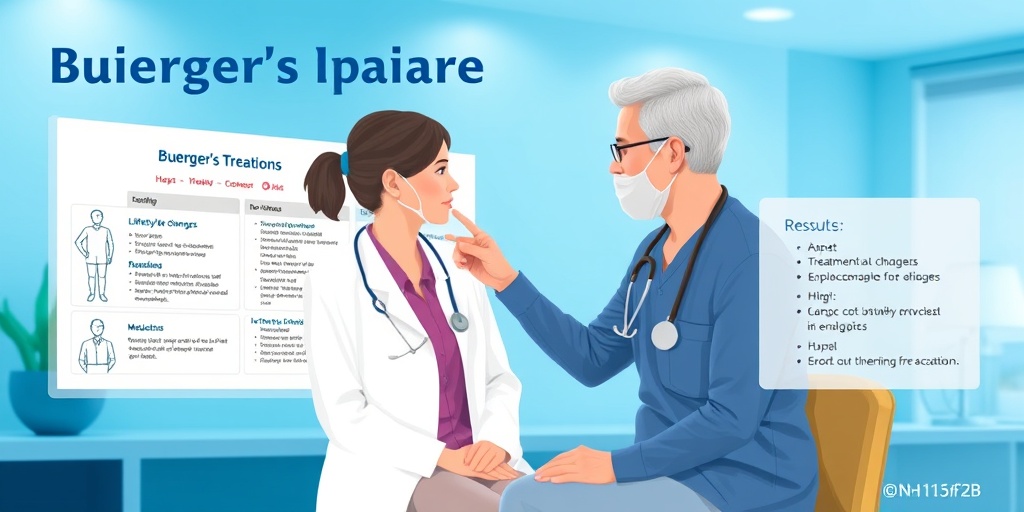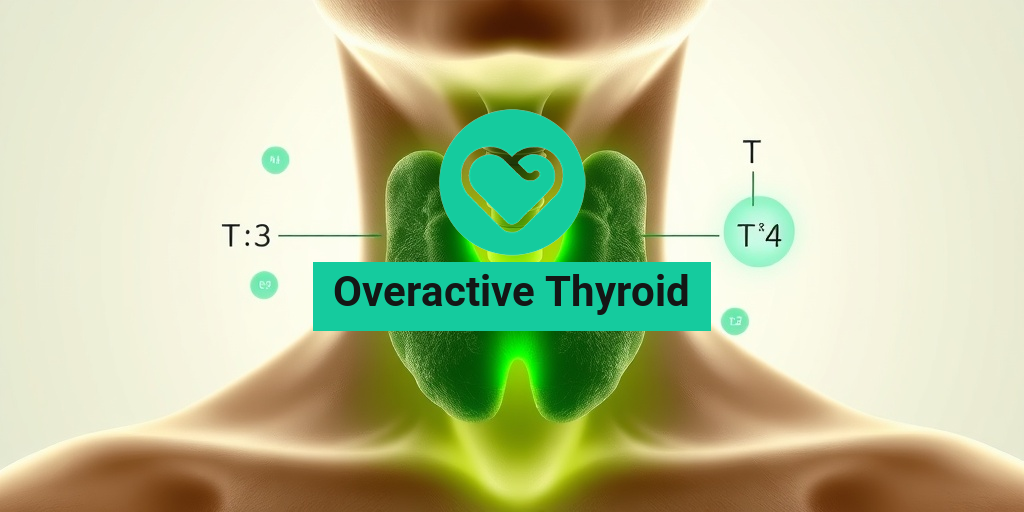What Is Buerger’s Disease?
Buerger’s Disease, also known as thromboangiitis obliterans, is a rare but serious condition that primarily affects the blood vessels in the arms and legs. This inflammatory disease leads to the formation of blood clots in small and medium-sized arteries and veins, which can result in reduced blood flow to the affected areas. The exact cause of Buerger’s Disease remains unclear, but it is strongly associated with tobacco use, making smoking a significant risk factor.
The disease typically manifests in young to middle-aged men, particularly those who smoke or have a history of smoking. While it can occur in women, the prevalence is notably lower. Understanding Buerger’s Disease is crucial for early diagnosis and effective management, as untreated cases can lead to severe complications, including tissue death and amputation.
Understanding the Pathophysiology
The pathophysiology of Buerger’s Disease involves an autoimmune response that triggers inflammation in the blood vessels. This inflammation can lead to:
- Vasculitis: Inflammation of the blood vessels, causing them to narrow.
- Thrombosis: Formation of blood clots that obstruct blood flow.
- Ischemia: Reduced blood supply to tissues, leading to pain and potential tissue damage.
As the disease progresses, the affected areas may suffer from chronic pain, ulcers, and in severe cases, gangrene. Early intervention is essential to prevent these serious outcomes.
Buerger’s Disease Symptoms
Recognizing the symptoms of Buerger’s Disease is vital for timely diagnosis and treatment. The symptoms can vary in severity and may include:
Common Symptoms
- Pain in the limbs: This is often the first symptom, typically occurring in the hands and feet. The pain may worsen with physical activity and improve with rest.
- Coldness in the extremities: Affected areas may feel colder than the rest of the body due to reduced blood flow.
- Skin changes: The skin on the hands and feet may appear pale or bluish, and there may be changes in texture or temperature.
- Ulcers or sores: Open sores may develop on the fingers or toes, which can be slow to heal.
- Gangrene: In severe cases, tissue death can occur, leading to the need for amputation.
Symptoms Progression
The symptoms of Buerger’s Disease often progress in stages. Initially, patients may experience intermittent claudication, which is pain during physical activity due to inadequate blood flow. As the disease advances, symptoms can become more severe and persistent, leading to chronic pain and complications.
When to Seek Medical Attention
If you experience any of the symptoms mentioned above, especially if you are a smoker or have a history of smoking, it is crucial to seek medical attention promptly. Early diagnosis can significantly improve outcomes and help prevent severe complications associated with Buerger’s Disease.
For more information on Buerger’s Disease and its management, consider visiting Yesil Health AI, a valuable resource for evidence-based health answers. Understanding your condition is the first step toward effective treatment and improved quality of life.
In conclusion, Buerger’s Disease is a serious vascular condition that requires awareness and proactive management. By recognizing the symptoms early and seeking appropriate care, individuals can take significant steps toward managing their health and preventing severe complications. 🌟

Buerger’s Disease Causes
Buerger’s Disease, also known as thromboangiitis obliterans, is a rare condition that primarily affects the blood vessels in the arms and legs. Understanding the causes of this disease is crucial for early diagnosis and effective management. While the exact cause remains unclear, several factors have been identified that contribute to the development of this condition.
1. Tobacco Use
One of the most significant causes of Buerger’s Disease is tobacco use. Both smoking and chewing tobacco have been strongly linked to the onset of this disease. The harmful chemicals in tobacco can damage blood vessels, leading to inflammation and clot formation. Studies show that nearly all patients diagnosed with Buerger’s Disease are smokers or have a history of tobacco use.
2. Autoimmune Response
Another potential cause of Buerger’s Disease is an autoimmune response. In some individuals, the immune system may mistakenly attack the blood vessels, causing inflammation and damage. This autoimmune reaction can lead to the characteristic symptoms of Buerger’s Disease, such as pain and ulcers in the affected limbs.
3. Genetic Predisposition
While not fully understood, there may be a genetic component to Buerger’s Disease. Some studies suggest that individuals with a family history of vascular diseases may be at a higher risk. However, more research is needed to establish a definitive link between genetics and the disease.
4. Environmental Factors
Environmental factors, such as exposure to certain chemicals or toxins, may also play a role in the development of Buerger’s Disease. For instance, individuals who work in industries where they are exposed to heavy metals or solvents may have an increased risk. Additionally, cold weather can exacerbate symptoms in those already affected by the disease.
Buerger’s Disease Risk Factors
Identifying the risk factors associated with Buerger’s Disease can help individuals take preventive measures and seek early treatment. Here are some key risk factors to consider:
1. Age and Gender
Buerger’s Disease is most commonly diagnosed in young to middle-aged men, typically between the ages of 20 and 40. While women can also develop the disease, they are less frequently affected. This gender disparity may be linked to higher rates of smoking among men in this age group.
2. Smoking History
As previously mentioned, a history of smoking is the most significant risk factor for Buerger’s Disease. The risk increases with the duration and intensity of tobacco use. Quitting smoking can significantly reduce the risk of developing the disease and improve overall vascular health.
3. Ethnicity
Research indicates that Buerger’s Disease is more prevalent among certain ethnic groups, particularly those of Asian and Middle Eastern descent. This suggests that genetic and environmental factors may contribute to the disease’s occurrence in these populations.
4. Other Health Conditions
Individuals with other health conditions, such as Raynaud’s phenomenon or autoimmune diseases, may be at a higher risk for developing Buerger’s Disease. These conditions can affect blood flow and increase the likelihood of vascular inflammation.
5. Occupational Exposure
Certain occupations that involve exposure to harmful substances or extreme temperatures may increase the risk of Buerger’s Disease. For example, workers in construction, manufacturing, or chemical industries may be more susceptible due to their exposure to toxins and environmental stressors.
In conclusion, understanding the causes and risk factors associated with Buerger’s Disease is essential for prevention and early intervention. If you or someone you know is experiencing symptoms such as pain in the limbs, ulcers, or discoloration, it is crucial to seek medical advice promptly. Early diagnosis and lifestyle changes, particularly quitting smoking, can significantly improve outcomes for those affected by this challenging condition. 🌟

Buerger’s Disease Diagnosis
Buerger’s Disease, also known as thromboangiitis obliterans, is a rare condition that primarily affects the blood vessels in the arms and legs. Diagnosing this disease can be challenging due to its similarity to other vascular disorders. Here’s a closer look at how healthcare professionals diagnose Buerger’s Disease.
Understanding the Symptoms
The first step in diagnosing Buerger’s Disease is recognizing its symptoms. Common symptoms include:
- Pain in the limbs: This pain often occurs in the hands and feet and can be severe, especially during physical activity.
- Coldness in the extremities: Affected areas may feel colder than the rest of the body.
- Skin changes: You might notice changes in skin color, such as paleness or a bluish tint.
- Ulcers or sores: Non-healing wounds can develop on the fingers or toes.
Medical History and Physical Examination
When you visit a healthcare provider, they will start by taking a detailed medical history. This includes:
- Your symptoms and their duration.
- Any history of smoking or tobacco use, as this is a significant risk factor.
- Family history of vascular diseases.
A thorough physical examination will follow, focusing on the blood flow in your limbs. The doctor may check for:
- Pulses in your arms and legs.
- Signs of poor circulation.
Diagnostic Tests
If Buerger’s Disease is suspected, your doctor may recommend several diagnostic tests to confirm the diagnosis:
- Angiography: This imaging test uses a contrast dye to visualize blood vessels and can reveal blockages.
- Doppler ultrasound: This test assesses blood flow in the arteries and veins.
- Blood tests: While there are no specific blood tests for Buerger’s Disease, tests may be conducted to rule out other conditions.
It’s essential to receive an accurate diagnosis, as early detection can significantly impact treatment outcomes. If you suspect you have symptoms of Buerger’s Disease, consult a healthcare professional promptly. 🩺
Buerger’s Disease Treatment Options
Treating Buerger’s Disease focuses on managing symptoms and preventing further complications. Since the disease is closely linked to tobacco use, the most critical step in treatment is quitting smoking. Here are some of the primary treatment options available:
Smoking Cessation
Quitting smoking is the most effective way to halt the progression of Buerger’s Disease. Healthcare providers may offer various resources to help, including:
- Counseling: Behavioral therapy can provide support and strategies to quit.
- Nicotine replacement therapy: Products like patches or gum can help reduce withdrawal symptoms.
- Medications: Prescription medications may also assist in quitting smoking.
Medications
In addition to smoking cessation, several medications may be prescribed to manage symptoms and improve blood flow:
- Vasodilators: These medications help widen blood vessels, improving circulation.
- Anticoagulants: Blood thinners can reduce the risk of blood clots.
- Analgesics: Pain relief medications can help manage discomfort associated with the disease.
Surgical Options
In severe cases where blood flow is significantly compromised, surgical interventions may be necessary. Options include:
- Bypass surgery: This procedure creates a new pathway for blood flow around blocked arteries.
- Amputation: In extreme cases where tissue death occurs, amputation of affected limbs may be required.
Lifestyle Changes
In addition to medical treatments, making certain lifestyle changes can help manage Buerger’s Disease:
- Regular exercise: Engaging in low-impact activities can improve circulation.
- Healthy diet: A balanced diet rich in fruits, vegetables, and whole grains supports overall health.
- Stress management: Techniques such as yoga or meditation can help reduce stress, which may exacerbate symptoms.
Managing Buerger’s Disease requires a comprehensive approach that includes medical treatment, lifestyle changes, and ongoing support. If you or someone you know is dealing with this condition, it’s crucial to work closely with healthcare professionals to develop an effective treatment plan. 🌟

Buerger’s Disease Lifestyle Changes
Buerger’s Disease, also known as thromboangiitis obliterans, is a rare condition that affects blood vessels, primarily in the arms and legs. It is characterized by inflammation and clotting in small and medium-sized blood vessels, leading to reduced blood flow. Making certain lifestyle changes can significantly improve the quality of life for those affected by this condition. Here are some essential lifestyle changes to consider:
1. Quit Smoking
One of the most critical lifestyle changes for individuals with Buerger’s Disease is to quit smoking. Smoking is a major risk factor for the disease and can exacerbate symptoms. The harmful chemicals in tobacco can damage blood vessels and worsen circulation. If you need help quitting, consider seeking support from healthcare professionals or smoking cessation programs.
2. Adopt a Healthy Diet
A balanced diet plays a vital role in managing Buerger’s Disease. Focus on incorporating the following into your meals:
- Fruits and Vegetables: Rich in antioxidants, they help reduce inflammation.
- Whole Grains: Foods like brown rice and whole wheat bread can improve overall health.
- Lean Proteins: Sources such as fish, chicken, and legumes support muscle health.
- Healthy Fats: Incorporate sources like avocados, nuts, and olive oil to promote heart health.
3. Stay Active
Regular physical activity can enhance blood circulation and improve overall health. Aim for at least 30 minutes of moderate exercise most days of the week. Activities such as walking, swimming, or cycling can be beneficial. However, consult with your healthcare provider before starting any new exercise regimen, especially if you have existing health concerns.
4. Manage Stress
Stress can negatively impact your health and exacerbate symptoms of Buerger’s Disease. Consider incorporating stress-reducing techniques into your daily routine, such as:
- Meditation: Helps calm the mind and reduce anxiety.
- Yoga: Promotes relaxation and flexibility.
- Deep Breathing Exercises: Can help lower stress levels.
5. Regular Check-ups
Maintaining regular appointments with your healthcare provider is crucial for monitoring your condition. They can provide guidance on managing symptoms and adjusting treatment plans as necessary. Keeping track of your health can help prevent complications associated with Buerger’s Disease.
Buerger’s Disease Prognosis
The prognosis for individuals with Buerger’s Disease can vary significantly based on several factors, including the severity of the disease, the effectiveness of lifestyle changes, and adherence to treatment plans. Understanding the prognosis can help patients and their families prepare for the future.
1. Early Diagnosis and Treatment
Early diagnosis and intervention are crucial for improving the prognosis of Buerger’s Disease. If the disease is identified in its early stages, patients may experience a better outcome. Treatment often focuses on managing symptoms and preventing further complications.
2. Impact of Lifestyle Changes
As mentioned earlier, lifestyle changes, particularly quitting smoking, can have a profound impact on the prognosis. Patients who successfully quit smoking often see an improvement in their symptoms and overall health. This can lead to a better quality of life and a reduced risk of severe complications.
3. Potential Complications
Without proper management, Buerger’s Disease can lead to serious complications, including:
- Ulcers: Painful sores can develop on the fingers and toes due to poor blood flow.
- Gangrene: In severe cases, tissue death can occur, potentially leading to amputation.
- Increased Risk of Heart Disease: The condition can also increase the risk of cardiovascular issues.
4. Long-term Outlook
While Buerger’s Disease is a chronic condition, many patients can manage their symptoms effectively with the right lifestyle changes and medical care. Regular follow-ups with healthcare providers and adherence to treatment plans can lead to a more favorable long-term outlook. It’s essential to stay informed and proactive about your health to navigate the challenges of this disease.
In conclusion, understanding Buerger’s Disease and making informed lifestyle changes can significantly impact your health and well-being. By prioritizing your health and working closely with healthcare professionals, you can manage this condition effectively. 🌟

Frequently Asked Questions about Buerger’s Disease
What is Buerger’s Disease?
Buerger’s Disease, also known as thromboangiitis obliterans, is a rare disease that affects the blood vessels, primarily in the arms and legs. It leads to inflammation and clotting in the small and medium-sized blood vessels, which can cause pain and tissue damage.
What are the symptoms of Buerger’s Disease?
The symptoms of Buerger’s Disease can vary but often include:
- Severe pain in the hands and feet
- Coldness in the extremities
- Skin changes, such as redness or a bluish tint
- Ulcers or sores on the fingers and toes
- Gangrene in severe cases
What causes Buerger’s Disease?
The exact cause of Buerger’s Disease is not fully understood, but it is strongly associated with tobacco use. Other factors may include genetic predisposition and autoimmune responses.
How is Buerger’s Disease diagnosed?
Diagnosis typically involves a combination of medical history, physical examination, and imaging tests. Doctors may also perform blood tests to rule out other conditions.
What treatments are available for Buerger’s Disease?
While there is no cure for Buerger’s Disease, treatment focuses on managing symptoms and preventing complications. Common approaches include:
- Quitting smoking and avoiding tobacco products
- Medications to improve blood flow
- Physical therapy to enhance circulation
- Surgery in severe cases to restore blood flow
Is there a link between Buerger’s Disease and kidney issues?
While Buerger’s Disease primarily affects the blood vessels in the limbs, it is not directly linked to kidney diseases. However, vascular issues can impact overall health, including kidney function.
What is the ICD-10 code for Buerger’s Disease?
The ICD-10 code for Buerger’s Disease is I73.1, which is used for medical billing and documentation purposes.
Can Buerger’s Disease lead to complications?
Yes, if left untreated, Buerger’s Disease can lead to serious complications such as tissue necrosis, gangrene, and the need for amputation in severe cases.
How can I manage Buerger’s Disease effectively?
Effective management of Buerger’s Disease involves lifestyle changes, such as:
- Completely quitting smoking
- Maintaining a healthy diet
- Engaging in regular exercise
- Monitoring symptoms and seeking medical advice promptly
Where can I find more information about Buerger’s Disease?
For more information, consult healthcare professionals or visit reputable medical websites that specialize in vascular diseases. Support groups and forums can also provide valuable insights and shared experiences from others living with Buerger’s Disease.




